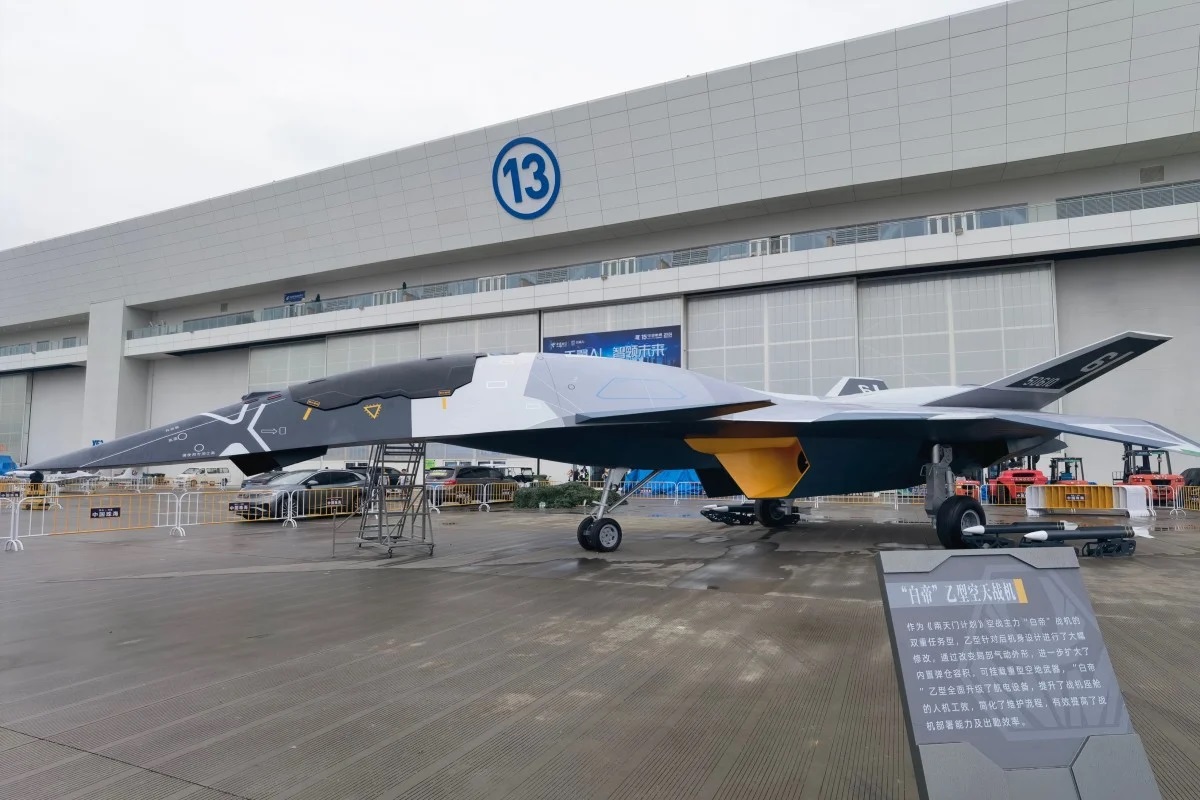China Unveils the 6th-Generation “Baidi B-Type” Aerospace Fighter Concept

At the 2024 Zhuhai Airshow, the Aviation Industry Corporation of China (AVIC) turned heads with the debut of its striking “Baidi B-Type” aerospace fighter concept, which aligns with China’s ambitious Nantianmen Project. This futuristic platform, designed to establish new benchmarks in both air and near-space combat, showcases China's intent to revolutionize its air superiority capabilities and challenge other global military powers like the United States and Russia.
The Baidi B-Type, the most advanced in the “Baidi” lineup, features a sleek, sci-fi-inspired design that optimizes aerodynamic performance. This concept jet emphasizes stealth with a refined rear fuselage that incorporates sweeping, contoured lines and advanced composite materials, which help minimize its radar signature. The enlarged weapons bay is another noteworthy feature, allowing this aircraft to carry an expanded suite of munitions, including a mix of advanced air-to-air missiles and precision-guided air-to-ground ordnance. This modular payload capability indicates the jet’s flexibility in handling multi-theater missions.
From an avionics standpoint, AVIC has introduced a cutting-edge sensor suite that enhances situational awareness and electronic warfare (EW) efficiency. This comprehensive sensor fusion system integrates AI-driven threat detection, making it more adaptive to rapidly changing combat dynamics. The jet is designed to operate within a connected battlefield, capable of engaging in network-centric warfare alongside UAVs and other high-tech assets, contributing to a seamless military ecosystem.
The cockpit redesign is another key highlight, reflecting a human-machine synergy that places a premium on pilot efficiency. Ergonomic controls, augmented reality (AR) helmet displays, and optimized seating configurations are expected to lower pilot fatigue during extended operations. These upgrades underscore a strategic pivot toward making the platform more intuitive and responsive, particularly critical in hypersonic and high-altitude engagements.
Moreover, maintainability has been a core focus for AVIC. The Baidi B-Type’s construction employs modular components, aiming to simplify repair processes and expedite turnaround times. This is essential for keeping the fighter battle-ready, especially in scenarios where rapid deployments are crucial. This aspect hints at China’s vision for a robust and sustainable combat fleet that can endure high-intensity conflict scenarios.
The Nantianmen Project, under which the Baidi B-Type falls, is not merely about building a fighter but represents a comprehensive effort to integrate aerospace and near-space operational capabilities. The aircraft's potential to operate in the edge-of-space domains signals a strategic leap forward, as this would expand China’s tactical reach and response flexibility.
Though the Baidi B-Type remains a conceptual model, the unveiling exemplifies China’s ambition to compete in the race for 6th-generation air superiority technology. With global interest piqued, defense analysts are watching to see how China’s progress could reshape the balance of power, especially as new contenders emerge in this high-stakes arena.
The Baidi B-Type’s development represents a bold leap forward, signaling AVIC’s and China’s strategic foresight in aerospace warfare and their commitment to shaping the future battlefield. If this concept reaches operational status, it could serve as a significant force multiplier, reinforcing China’s position in the global race for aerial dominance and advanced aerospace warfare capabilities.



